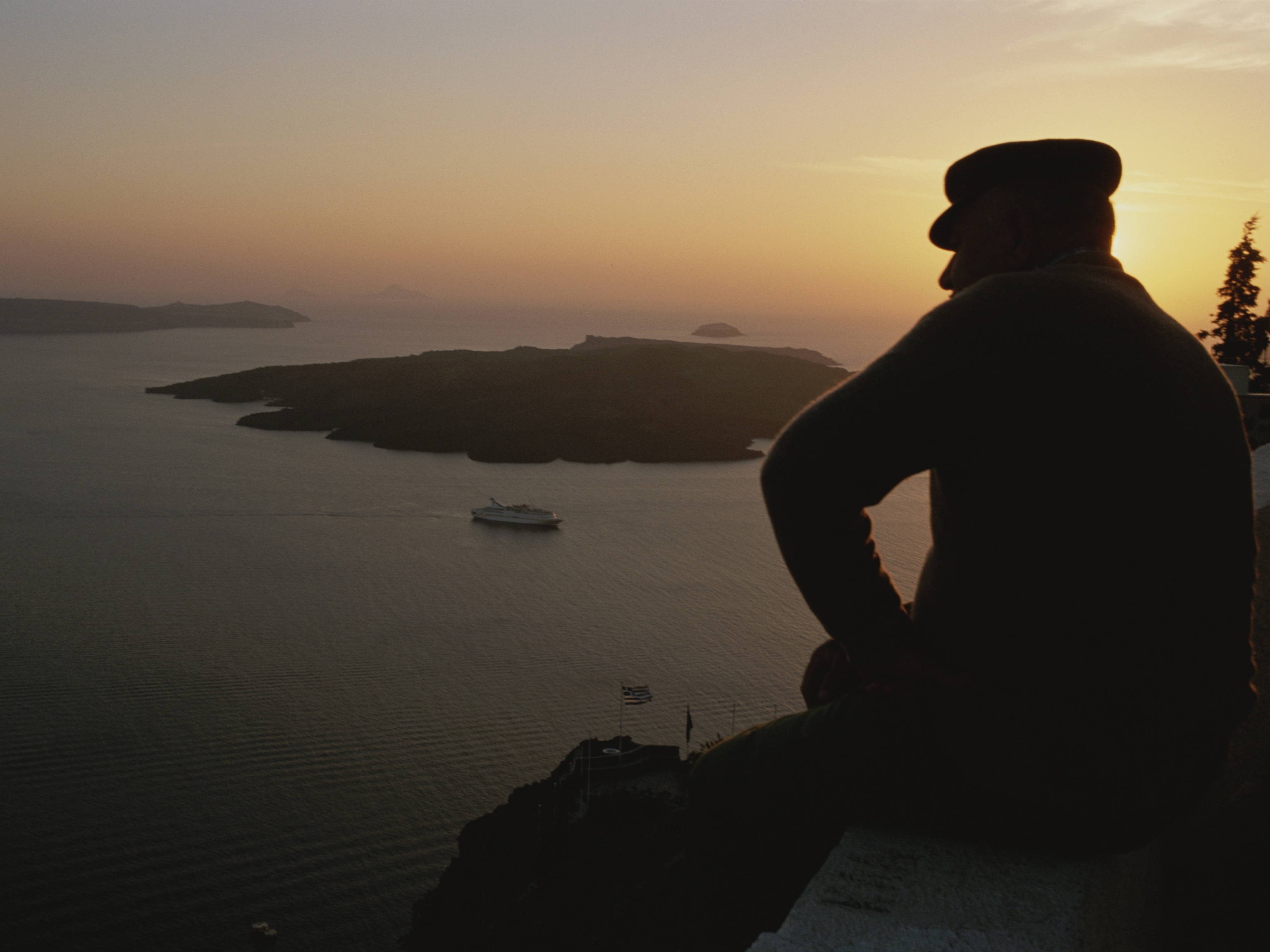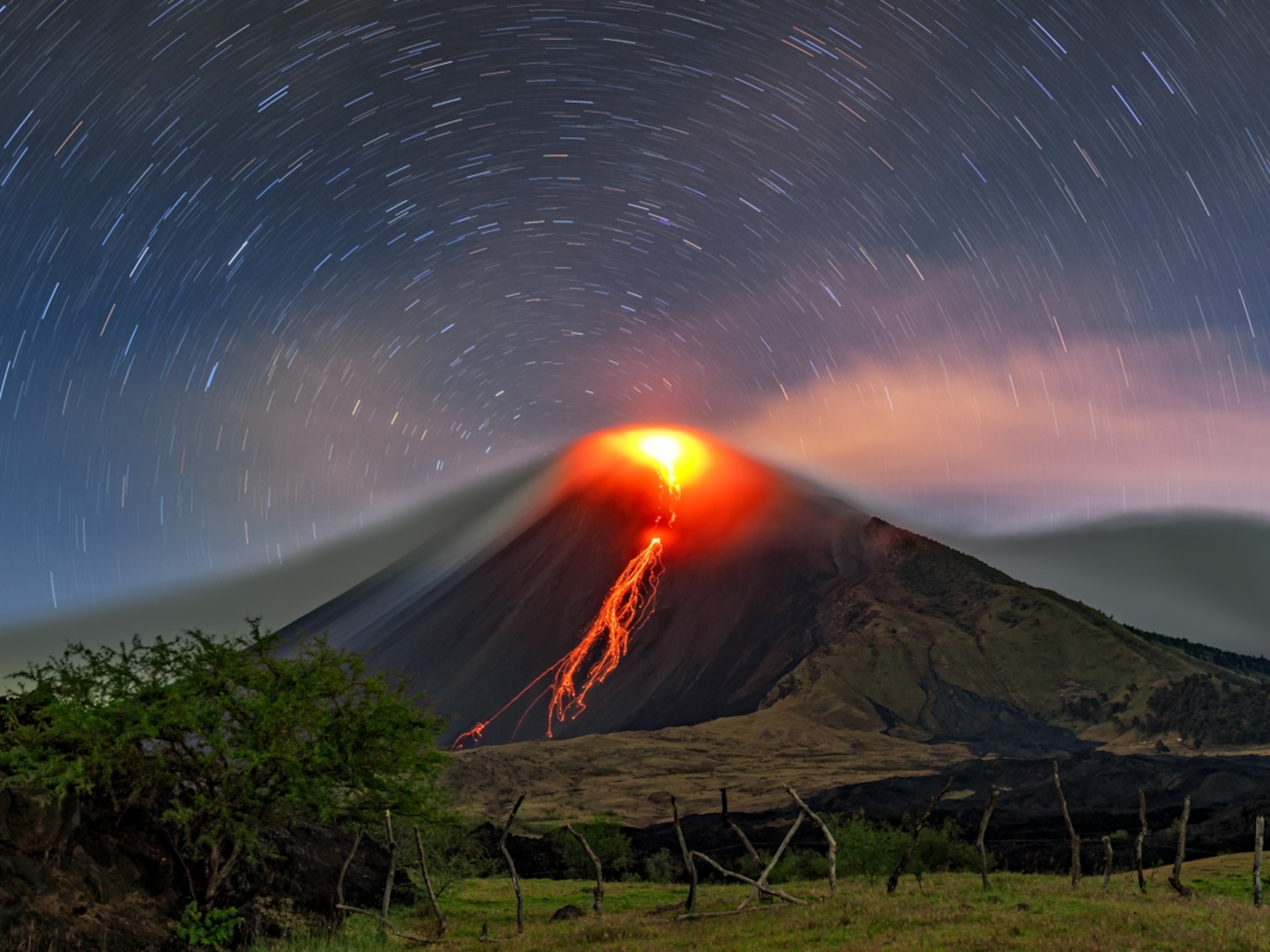
Erupting Volcano May Have Destroyed Huge Penguin Colony
One of the largest penguin colonies in the world is threatened by hot ash and smoke.
Scientists fear that a remote volcano in the South Atlantic Ocean may have seriously harmed the world's largest chinstrap penguin colony.
Mount Curry, a stratovolcano located on Zavodovski Island—the northernmost island of the South Sandwich archipelago—has been spewing smoke and ash since March 2016, covering one-third to one-half of the island in ash.
The island is home to nearly 1.2 million breeding pairs of chinstrap penguins (Pygoscelis antarcticus). With 7.5 million chinstrap penguins worldwide, the colony represents over one-seventh of the species’ global population. The island is also home to 180,000 macaroni penguins (Eudyptes chrysolophus).
The penguins generally inhabit the island from November to April, using the rocky, volcanic slopes as breeding grounds. The eruption would have coincided with their annual molt, which leaves the penguins vulnerable and unable to enter the water.
Heating Up
Assuming they were unable to flee the island, the penguins would have been imperiled by the hot ash and smoke emanating from the volcano. The volcanic discharge could have potentially burned them, buried them in ash, or caused considerable breathing difficulties.
“In the case of chinstrap penguins, as with all penguins, they have an annual, entire-feather molt," says Michael Dunn, a seabird ecologist with the British Antarctic Survey. "During that period they are unable to go into the sea … all those outer, waterproof feathers are gone, and they are in the process of growing new ones.”
The BAS was alerted to the eruption when a fishing vessel sent them photos of the volcano taken while they worked in the area. The researchers then corroborated the eruption with satellite imagery and realized the volcano had been fuming since March. Only then did they begin to recognize the potential threat to the penguins.
He continues, “This isn’t usually a problem, but if your home suddenly becomes very unpleasant, the best way of escaping is going into the sea.”
Mount Curry has been spewing smoke and ash since March 2016, covering one-third to one-half of the island in ash.
What We Know
The photos and images suggest that prevailing winds blew the plume to the east, straight into known penguin colonies, located just hundreds of meters from the volcano. The volcano is still intermittently releasing plumes.
Because the island is so remote—Zavodovski Island is over a thousand miles from the nearest continental shoreline—the BAS cannot survey it until a planned research expedition arrives in December 2016 or January 2017. The researchers hope the penguins were able to move away from the plume, but will not be able to confirm the impact of the eruption until later this year, at the earliest.
Mount Curry, also referred to as Mount Asphyxia, reportedly erupted in 2012, though the only confirmation were images of the plume captured by the NASA Aqua Satellite. The Global Volcanism Program lists a number of unconfirmed eruptions in the early 1900s, but the last confirmed eruption prior to 2012 dated back to 1819.
Chinstrap penguins are a medium-size, sub-Antarctic species that are easily identified by a fine black line that crosses their cheeks. They breed on ice-free coastal areas and primarily feed on krill. The penguins return annually to the same nest site, generally with the same partner.
Dunn, though concerned, was hopeful and careful not to jump to conclusions. “We really can’t tell from the data we have … what the impact is. The birds might be absolutely OK.”
Follow Aaron Sidder on Twitter.





